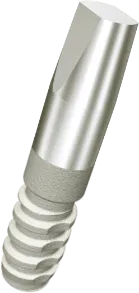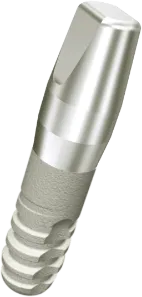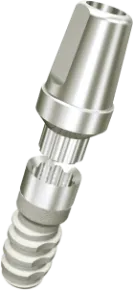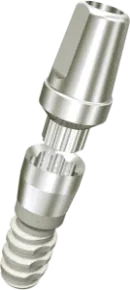It is a cylinder-type artificial tooth root with excellent safety, stability, and effectiveness, featuring a simple shape and a simple surgical procedure
Simple shape and simple system contribute to the expansion of applicable cases.
Simple
&
reliable
1 piece type
 Simple shape and technique!
Simple shape and technique!
Insert while gently rotating during implantation.
→The trabecular bone is slightly pushed through to improve the initial fixation after implantation.
Seamless is the feature of one piece. It has excellent mechanical strength, and there is no need to worry about loosening of screws.
a reliable
procedure
1 piece T type
 Expanded adaptation in intermediate sizes
Expanded adaptation in intermediate sizes
Insert while gently rotating during implantation.
→Slightly pushes through cancellous bone to improve initial fixation after implantation.
Seamless is the feature of one piece. It has superior mechanical strength, and there is no worry about loosening of screws.
the range of
indications
2 piece type
 Meeting the Growing Need for Esthetic Prosthetics
Meeting the Growing Need for Esthetic Prosthetics
A wide variety of abutments can be used to reproduce esthetic crown forms! Sufficiently adapts to crown inclination.
Compatible with overdentureOverdenture abutments allow for a wide range of root surface attachments (magnetic, 0-ring, ba1, etc.).
initial fixation
2 piece T type
 Thick abutment mating part design
Thick abutment mating part design
Compared to the diameter of conventional products, the abutment mating portion is designed 1.0mm thicker, allowing the cervical portion of the superstructure to also be designed thicker, improving the initial fixation ability.
Increased strength to lateral forcesIt is more effective in cases requiring immediate post-extraction placement or GBR. Suitable for preventing subsidence and straying into the maxillary sinus, leading to reduced surgical risk.